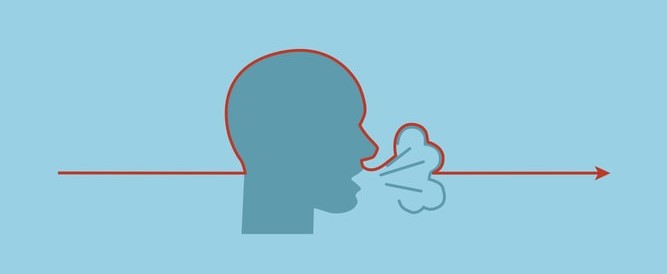A research by Politecnico di Milano, published in the journal Aerosol Science and Technology, tries to answer this question by analyzing a series of scenarios characterized by different weather conditions: a city in summer and autumn; a seaside town in summer; a mountain village in summer and winter
Ettore Maggiore, Matteo Tommasini and Paolo M. Ossi published on the magazine Aerosol Science and Technology the article "Propagation in outdoor environments of aerosol droplets produced by breath and light cough.
The research group studied the propagation of the aerosol that we emit from the mouth and nose by breathing, coughing or sneezing in various kinds of open environments.
Virus trasmitted via air such as the flu, the cold, SARS and obviously, Coronavirusdiffuse through areosolwhich is air saturated by water vapor and droplets.
Viruses "ride" the droplets. These evaporate during flight or fall to the ground, depending on their initial size. The evaporation rate depends on the temperature and humidity of the ambient air.
As the drop evaporates and contracts, its speed and flight time in the air flow associated with respiratory activity change.
Up to now, the propagation of aerosol from respiratory activities has been studied experimentally and modeling by considering closed environments and, more recently, environments with complete air conditioning.

In the paper researchers focused on the propagation in open spacesanalyzing breathing and light cough (the one for clearing the throat), normal respiratory activities in healthy or non-symptomatic people, and considering propagation in stagnant air, even if the effect of wind has been discussed.
The propagation distance of droplets have been calculated five environments characterized by different pressure, temperature, relative humidity: a city in summer and autumn; a seaside town in summer; a mountain village in summer and winter.
In every enviromental condition, among the droplets travelling for a longer distance, those emitted by coughing are bigger than the ones emitted breathing.
In the city in summer (high temperature, very high humidity) and in winter in the mountains (low temperature, medium-high humidity) the greatest propagation distances are observed: about 2 m from the mouth. The minimum distances are recorded in summer both in the mountains (high temperature, low humidity) and at the sea (high temperature, medium-high humidity): about 1.5 m from the mouth.
Cover Photo: Matteo Jorjoson on Unsplash
Research at Politecnico di Milano gives an essential contribution to the technological, cultural and social development of our country and of the whole world. In this historically significant period of time many researchers of Politecnico have developed and are continuing developing researches to forecast and handle the pandemic, cointaining the diffusion and mitigating its effects. Stay updated on the news and on the resarch on Covid-19 at Politecnico di Milano. Visit www.covid.progressinresearch.polimi.it
